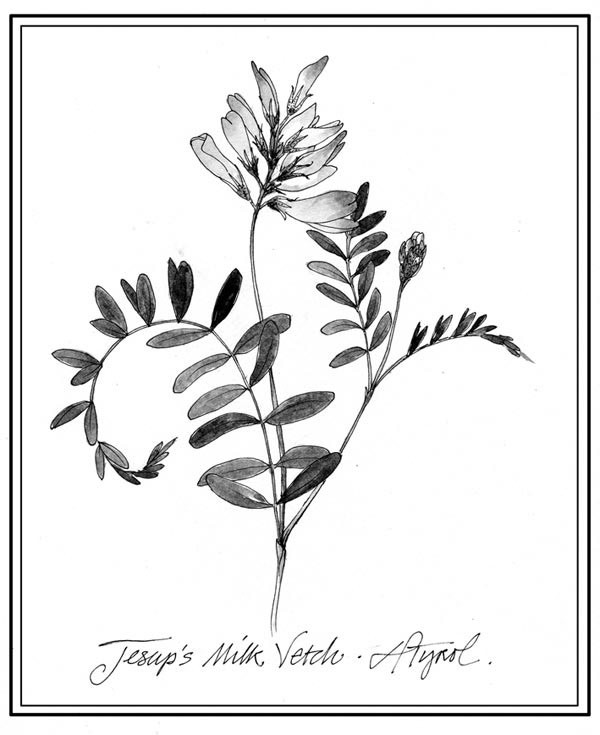
One of the rarest plants in New England is also one of the hardest to see, even if you know where to find it. That’s because it takes a bit of paddling on the Connecticut River to find each of the three known populations of Jesup’s milk vetch. A perennial member of the pea family with small green leaves and pale purple flowers, Jesup’s is clinging to life along a 15-mile stretch of the river in central New Hampshire and Vermont.
Jesup’s milk vetch is one of just four plants in New England that is on the federal endangered species list. It prefers to grow in the steep, rocky areas close to the river’s edge where sediment-filled crevices allow it to take hold. It’s a habitat that is regularly scoured by the break-up of river ice each year, which removes competing vegetation. But changes in the management of water flow in the Connecticut means that flood stages don’t get as high as they used to, so the river doesn’t scour out invasive species. And that’s the chief threat facing the Jesups.
A few years back, I was invited to join a team of biologists and volunteers in an effort to count the plants. We started at the boat launch in Claremont, New Hampshire and paddled upstream until we reached a steep, rocky site, about 400 meters long. The previous year (2005) the milk vetch team had counted 25,000 flower stalks at the site – each plant grows up to fifteen stalks, called inflorescences, with eight or ten pale purple flowers per stalk. Our visit in late June was just past the peak blooming period, so many plants had already dropped their flowers and were beginning to grow seedpods. When we climbed out of our canoes, we observed that the site still contained a number of plants, but it didn’t look as though there were anywhere close to 25,000. After finding the metal pins that divide the site into 20-meter sections at three elevations, we began counting inflorescences in each section.
It was quickly evident that competing invasive plants far outnumbered the Jesup’s milk vetch. Black swallow-wort, Japanese honeysuckle, purple loosestrife, and cypress spurge were abundant, as was poison ivy – a native plant that, like the exotic species, grows aggressively and outcompetes Jesup’s for soil, water, and nutrients. By the end of the day we had counted more than 3,700 stems of poison ivy, and all of us spent the next few days scratching.
We counted only 514 plants and 1,090 inflorescences that day, but this was somewhat expected. For the last decade or more, the species has been experiencing boom and bust cycles. The low number of inflorescences suggested that the next year (2007) would be a big rebound year. It was.
Unfortunately, the trend of invasive plant encroachment on Jesup’s habitat is continuing. At one of the three sites, 2012 was a record low year for the plant, with only a slight uptick in 2013, even after augmentation of the population with a dozen greenhouse-grown plants. A large patch of a previously unseen invasive plant, narrow-leaved bitter-cress, was discovered at one of the other sites in 2012, probably introduced as a result of Tropical Storm Irene. Thankfully, the third site, the largest of them all, seems to be doing well.
What links these three sites together besides Jesup’s milk vetch? Geology. The rocks in all three places have high concentrations of calcium and high weathering rates, which means that the calcium is easily released from the rocks. A volcanic rock called amphibolite, which is often found in association with plants requiring calcium-rich soils, is also found at all three sites, suggesting that Jesup’s requires more calcium than most plants.
All agree, however, that despite the challenges it is facing, the future of Jesup’s milk vetch remains promising. That’s partly due to the high survival rate of the cultivated plants added to the population in recent years and partly because the recent downturn in numbers is believed to have been caused by several unusual weather events. But largely the optimism is because, as one biologist said, “the river wipes the slate clean every year.”

